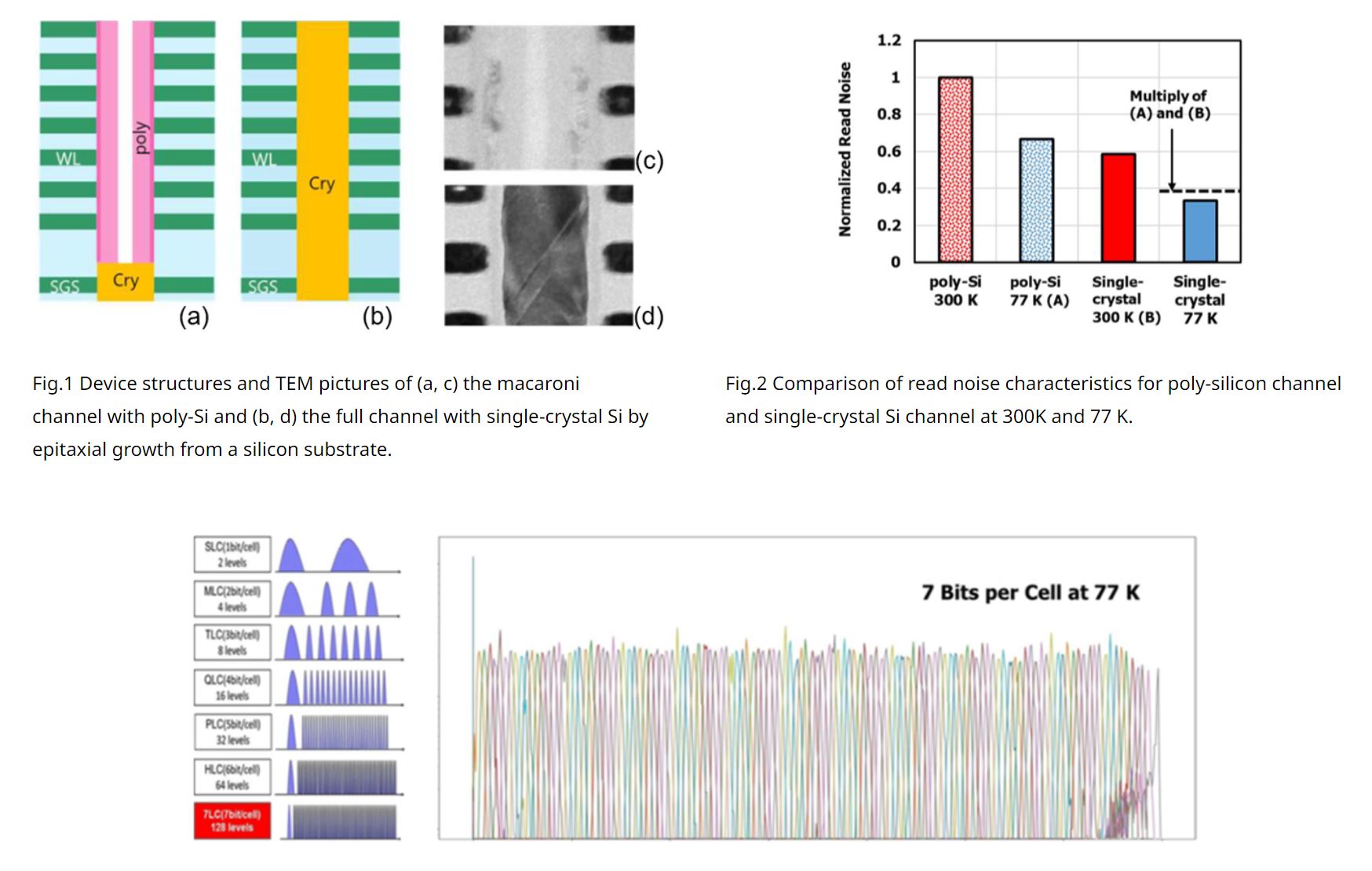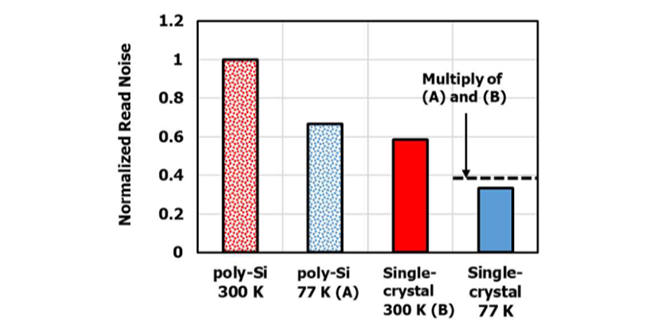
NAND researchers at Kioxia have successfully demonstrated a working concept of a new storage architecture called Hepta-level cell NAND flash. This new type of NAND can house up to 7 bits per cell, giving it nearly twice the storage capacity of QLC NAND flash. If Kioxia can stabilize this storage architecture at room temperature, it might become the ultimate successor to spinning hard drives in consumer and enterprise applications.
To create hepta-level NAND flash, Kioxia is using a new design called new silicon process technology to increase cell density, in conjunction with cryogenic cooling. New silicon process technology replaces current poly-silicon materials with a single-crystal silicon that is used in a channel inside a memory cell transistor. This apparently reduces the amount of read noise coming from the NAND flash by up to two-thirds. In other words, new silicon process technology produces clearer read signals for reading data off of the NAND flash, enough so to increase the bits cell capacity to 7.

Kioxia says this new storage architecture will also be significantly cheaper to produce, and even has a proposed solution incorporating hepta-level flash with cryogenic cooling. That would be cheaper than current (air-cooled or passively cooled) SSDs on the market today.
If Kioxia starts producing hepta-level NAND flash in the near future, it will likely change the SSD landscape forever. Ultra-high capacity SSDs will finally be possible, and SSDs will finally have the capacity to match most hard drives on the market today.
For perspective, the highest density NAND flash on sale today is QLC, with 4 bits per cell, used by drives like the Samsung 870 QVO 8TB SATA SSD, and the Sabrent Rocket 8TB NVMe SSD. With hepta-level flash, we could see drives almost as big as 16TB hitting consumer shelves (without other advancements, like more layers, which are also happening). The same could also apply to enterprise SSDs, with capacities that could match mainstream SAS hard drives.
But, speed and bandwidth (not to mention endurance) could be a potential issue with these future SSDs. We've seen this play out with QLC drives, where read and write speeds take a big hit compared to SLC, MLC, and TLC equivalents. If history repeats itself, this problem would likely become even worse with this new 7-layer hepta-level flash. Although for some instances where hard drives speeds have more or less been sufficient, that could be less of an issue.
We'll have to see how things play out, and what sort of solutions SSD manufacturers have in mind for circumventing these issues. In either case, hepta-level flash will at least need to have the same level of performance as hard drives to be competitive.
"Demo" - Google News
April 04, 2023 at 01:15AM
https://ift.tt/mLRdw3S
Kioxia Researchers Demo Hepta-Level Cell NAND Flash, Nearly Doubling the Capacity of QLC - Tom's Hardware
"Demo" - Google News
https://ift.tt/4O27i6I
https://ift.tt/I32zxwJ


No comments:
Post a Comment